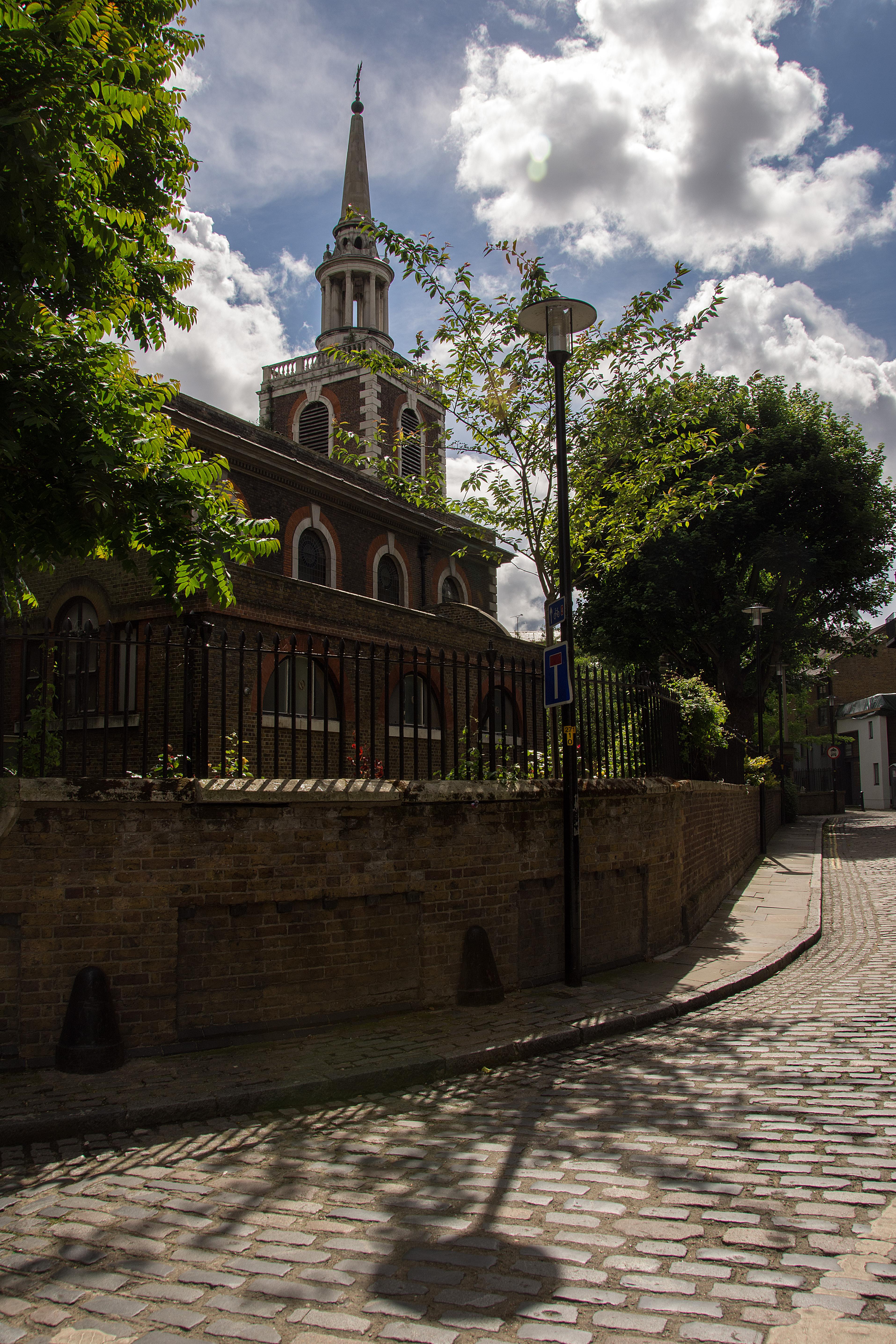Finnish Church in London
Rotherhithe, Greater London
The church is full of stories about people getting help, meeting long lost friends and experiencing the miraculous effects of sauna.

Christians have worshipped on this site for at least 1000 years and Roman bricks have been found on the site of the church which indicates that it may have been built on an earlier Roman building.
Rotherhithe, Greater London
The present parish church, replacing a 12th century building, was completed in 1716. Designed by John James, an associate of Sir Christopher Wren, it has a homely grandeur with deep roots in the maritime history of Britain. The links with the 'Mayflower', with the Pilgrim Fathers, and with Prince Lee Boo of Pelau, are particularly treasured.
There are many associations of the church with the Thames and the sea. The most interesting name is that of Christopher Jones, who was Captain of the famous Mayflower. The story of the Mayflower is one that many people will know. Christopher Jones was a Rotherhithe resident. He took the Mayflower to pick up passengers around the coast of East Anglia and called in at Rotherhithe on his way to America. Christopher Jones brought the Mayflower back to London but he died shortly afterwards in 1622 and was buried in St Mary, Rotherhithe, on 5 March. By the old style calendar, the year began on 25 March which meant that by that calendar the year was still 1621. The monument in the church to Jones was erected in 1965.
By the 1700s, it was clear that the church needed to be rebuilt. Being on very flat land, it often flooded and it was decided to rebuild the new one on the same position but raise its level. There are now several steps up to the door of the church from ground level. The rebuilding of the medieval church began in 1714 but it was still incomplete by 1737. The west tower has an inscription with 1747 on it and the chancel is possibly also of the same date. The church was rebuilt by John James who was an associate of Christopher Wren. The four pillars inside the church, supporting the roof, look as if they might be stone but they are actually timber, being formed from old ship’s wooden masts and are covered in plaster. The tower was rebuilt by Lancelot Dowbiggin, a City joiner and surveyor, although B Glanville was also involved. The gardlands behind the altar piece were carved by Grinling Gibbons. An opened pea pod is to be seen on a ‘vertical’ piece of wood to the right which was a ’signature’ that he used. The reredos itself was carved by Joseph Wade (whose memorial cartouche is in the south aisle).
The organ, built and installed by John Byfield in 1764, is a superb example of 18th century English organ building. Its tonal qualities have been retained to the present day, so that its sound is much as Handel (1685-1759) and his London contemporaries would have heard and appreciated.
Memorials inside and outside the building tell of the vision and philanthropy of former worshippers, of sacrifice, and of faith in times of suffering and adversity. In 1821 an additional churchyard to that surrounding the parish church was created. The extra piece of land across the road was purchased to extend the churchyard and a watchhouse was built between it and the school. The watchhouse remains to be seen today and is one of only a few still in existence in Inner London.
St Mary's remains a living and working church, supported by local people and serving a broad community. Though you may not be able to be with us in the flesh, we hope you enjoy your visit to this web site. There are many interesting things to reflect upon, church architecture and design, history, music, memorial poetry and lettering, even a little philately!
Rotherhithe, Greater London
The church is full of stories about people getting help, meeting long lost friends and experiencing the miraculous effects of sauna.
Bermondsey, Greater London
The great west doors of St James's church have been wide open to the people of Bermondsey since 1829.
Shadwell, Greater London
Known as the church of Sea Captains due to the many mariners in the congregation, including Captain James Cook.